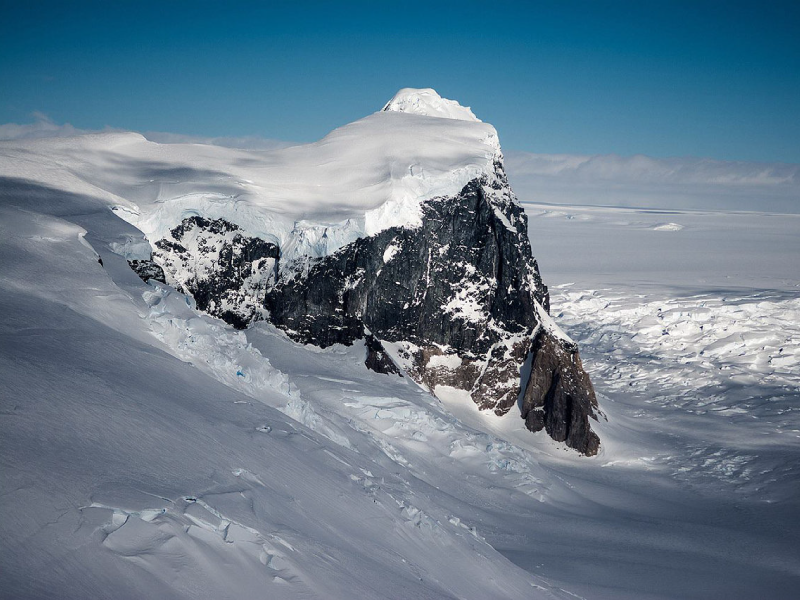News & Updates

A rock outcropping on Fleming Glacier, which feeds one of the accelerating glaciers in Marguerite Bay on the western Antarctic Peninsula. Credit: NASA/OIB

A rock outcropping on Fleming Glacier, which feeds one of the accelerating glaciers in Marguerite Bay on the western Antarctic Peninsula. Credit: NASA/OIB
Wind, Warm Water Rev Up Melting Antarctic Glacier
[19-Sep-2017]A NASA study has located the Antarctic glaciers that accelerated the fastest between 2008 and 2014 and finds that the most likely cause of their speedup is an observed influx of warm water into the bay where they're located.
The water was only 1 to 2 degrees Fahrenheit (0.5 to 1 degree Celsius) warmer than usual water temperatures in the area, but it increased the glaciers' flow speeds by up to 25 percent and multiplied the rate of glacial ice loss by three to five times — from 7 to 10 feet of thinning per year (2 to 3 meters) up to 33 feet per year (10 meters).
Researchers at NASA's Jet Propulsion Laboratory in Pasadena, California, found that the warmer water was driven into the area by winds associated with two global climate patterns: La Niña and the less-known Southern Annular Mode, which involves a change in location of the belt of winds that encircles Antarctica. The glaciers' acceleration lasted from mid-2008 to 2012. After that, they slowed down but have continued to flow faster than they did before the warm water arrived.
View the full news article here.
